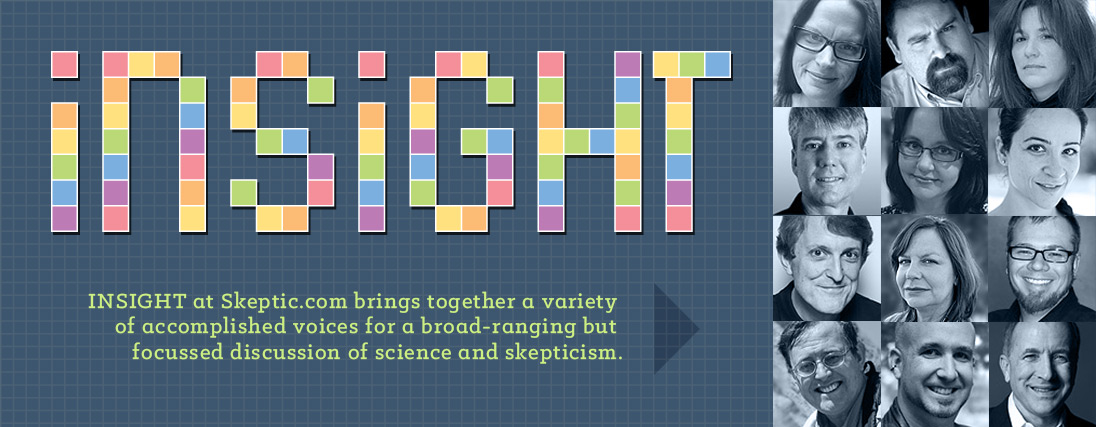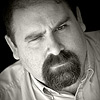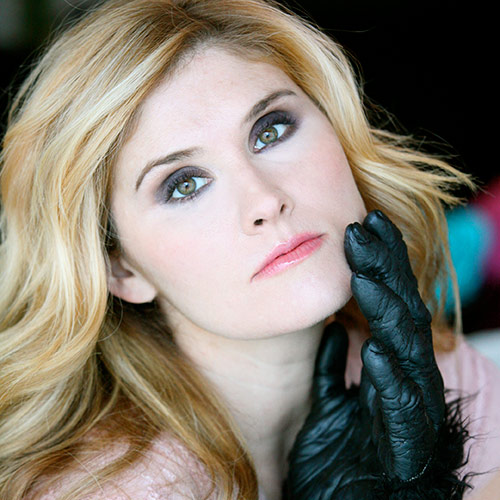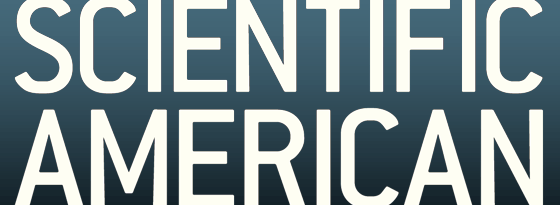About this week’s eSkeptic
Modern-day mystics have at their disposal a vast and ever-growing arsenal of scientific vocabulary, and employ it liberally in arguing for such practices as quantum healing and energy medicine, variants of which have in recent decades grown into billion dollar industries, supported by millions of consumers. Surely that many people can’t be wrong, can they? In this week’s eSkeptic, Jérémie Harris examines some of the vocabulary often invoked by mystics in the quantum healing community, and contrasts their usage of that vocabulary with current scientific definitions. This article appeared Skeptic magazine 20.1 in 2015.
Order the back issue.
Jérémie Harris is a Ph.D. student in quantum photonics under the Canada Excellence Research Chair in quantum nonlinear optics, at the Max Planck – University of Ottawa Centre for Extreme and Quantum Photonics. He holds a Master’s degree in biological physics from the University of Toronto. His work addresses foundational questions and paradoxes in quantum mechanics, and the creation of exotic structured matter waves.
Quantum Cure-All or Quackery?
Can Superpositions of Quantum Consciousness Unlock Your Brain’s Hidden Nonlocal Potentiality?
by Jérémie Harris
They were once called snake oil salesmen. Today, proponents of mystical healing and alternative medicine offer remedies for a plethora of diseases and conditions, promising pain relief, lifelong health, and even in some cases the prospect of life after death to anyone “open-minded” enough to pay for non-standard treatment. Modern-day mystics have at their disposal a vast and ever-growing arsenal of scientific vocabulary, and employ it liberally in arguing for such practices as quantum healing and energy medicine, variants of which have in recent decades grown into billion dollar industries, supported by millions of consumers. Surely that many people can’t be wrong, can they?
In what follows, we will look at a sample of quantum mechanical vocabulary often invoked by mystics, and contrast the correct scientific meaning of the terms with their usage in the quantum healing community. Quantum Superposition
In a report on her lecture at the European Quantum Energy Medicine Conference in 2008, Mae-Wan Ho, director of the Institute of Science in Society, wrote: “The quantum wave function that describes the coherent organism is a superposition of all possibilities. It implies that the future is entirely open, and the potentials infinite. That’s just what a healthy person should feel like.”1 This may sound like an impressive claim, but what exactly is meant by “superposition of all possibilities”?
Among the more counterintuitive features of quantum theory is its prediction that particles—and sometimes groups of them—can exist in multiple states at once. Hence, while we humans seldom find ourselves both asleep and awake simultaneously, the same cannot be said of the microscopic entities that comprise the quantum world. For instance, it is possible for a subatomic particle, such as an electron, to be bound to two or more different atoms at once; indeed, this arrangement is precisely what is involved in the formation of typical chemical bonds.
As well, electrons and many other subatomic entities may in some contexts be thought of as small rotating spheres. The direction of their rotation is referred to as their “spin”. An electron, for example, may spin clockwise or counterclockwise, in which case it is respectively referred to as occupying the “spin up” or “spin down” states. Remarkably, the electron may also spin in both directions simultaneously. Loosely speaking, one might think of such an electron as possessing some clockwise spin character, and some counterclockwise spin character.
To understand this apparent impossibility, it may be useful to draw a concrete analogy. Imagine that we can represent quantum states by colors, white corresponding to the spin up state, and black to the spin down state. An electron might be described by the color white, the color black, or any combination thereof—some shade of grey. This shade may be more black than white, or vice-versa, or an exact 50/50 mix of the two colors. A particle or physical system that exists in multiple quantum states simultaneously—like the“grey electron” in our analogy—is said to represent a quantum superposition of these states.
With this in mind, let’s return to Mae-Wan Ho’s use of the term “superposition” and to her conclusion that the “potentials” are infinite and the future “entirely open”, due to the existence of a superposition of states. The term “potential”—ubiquitous physics shorthand for “potential energy”—simply refers to energy stored in a physical system, like the elastic energy of a compressed spring. In quantum theory, the wavefunction (a mathematical object that describes a physical system) is determined by the potential energy, and not the other way around, as Ho seems to imply. Finally, Ho makes no attempt to explain the purported connection between the psychological state of a healthy person, and the “infinite” nature of the “quantum potential”. Instead, she flatly states this connection as fact, without elaboration or evidence.
Observer Effect
How is the observer effect discussed among quantum mystics? As with much of their jargon, it is difficult to find a consistent usage. That said, the following quotation—an excerpt from Deepak Chopra’s 2010 Huffington Post article entitled “Which is Real, the Moon or God?”—is a fairly representative example:2 “The observer is non-local consciousness, and that consciousness collapses its own possibility waves into a measurable event.” What does this mean? In our everyday experience, we are used to the idea that the measurement of any physical quantity invariably gives just one result. When we step on a scale and read the dial, we obtain a single number: a weight. Likewise, if we were to measure the direction in which a spinning top rotates, we would obtain a single result: clockwise or counterclockwise. Curiously, this remains true at the quantum level—even measurements carried out on quantum superpositions yield only one outcome. If we measure the spin of an electron that is initially rotating both clockwise and counterclockwise simultaneously, we always obtain one of two results: spin up or spin down.
To return to our earlier color analogy, this means that a grey electron, despite being part white and part black, will be found to be either white or black upon measurement. It is as if the electron, having originally spun in two directions at once, is forced to “choose” one direction over the other for the purpose of the measurement. In some sense, it is polarized from its initial grey state to a pure black or white state. And, it turns out, the darker the electron’s initial shade of grey, the more likely it is to yield the “black” result upon measurement.
Some therefore suggest that the measurement process itself leads to the destruction—or collapse— of superpositions, and their replacement by a single quantum state. In our analogy, this would correspond to replacing a grey electron with a black or white one.3 This apparent connection between the measurement process and the collapse of quantum superpositions is sometimes referred to as the observer effect. In essence, it is said, the observer can induce a physical system to collapse into a single state simply by measuring it.
How does this understanding square with Deepak Chopra’s claim that “the observer is nonlocal consciousness, and that consciousness collapses its own possibility waves into a measurable event”? That an observer might constitute a “non-local consciousness” is at best an ambiguous claim, and at worst reflects a profound misunderstanding of the observer effect. As we have seen, the true definition of the observer effect makes no reference to the nature of the observing entity. It need not necessarily be a conscious person; it can be an unconscious machine.4 The role that might be played by “non-locality” with respect to consciousness in this case is also unclear. This expression seems to simply have been misused—a remarkable achievement given the frequency with which it appears in Chopra’s writing.
Non-Locality
Noah McKay, quantum healer and author of Wellness at Warp Speed, invokes the concept of nonlocality in a medical context, as follows: “Non-local, invisible, energetic interactions with the body include everything from ECG [electrocardiograms], CT [X-ray computed tomography] and MRI [magnetic resonance imaging] scans to Qi-Gong, prayer, and psychic healing.”5
It may be somewhat surprising to learn that the MRI and CT scans to which many of us have been subjected operate by “non-local…energetic interactions with the body.” Indeed it should, because it is not true. So what is locality?
Einstein’s theories of special and general relativity tell us a lot about our universe. Among the myriad of fascinating and counter-intuitive features of relativity theory is the fact that nothing can travel faster than the speed of light, including the very forces of nature. As a consequence, two objects sufficiently far away from each other have no way of interacting—and cannot feel one another’s presence— until enough time has passed for light from one object to reach the other.
The sun, for example, is about 93 million miles away from Earth. Since light travels at around 11 million miles per minute, this means that it takes the sun’s rays about eight minutes to reach us. As a result, according to relativity theory, it takes a full eight minutes for us to feel any effect that the sun may have on our planet—including its gravity. So, if the sun were to disappear now, it would take eight minutes for the sky to blacken around us. Our planet would even continue in its regular orbit for eight minutes, before being ultimately flung out into the cosmic darkness.
The sun therefore has a near-immediate impact only on its local surroundings: the further an object is from the sun, the longer it takes for it to be influenced by the state of solar affairs. We therefore refer to relativity as a local theory, since it does not allow objects separated by a significant distance to interact instantaneously. What, then, does it mean for an effect to be non-local?
In short, any effect that propagates instantaneously, and which is therefore not limited by the speed of light, is said to be non-local. Now returning to McKay’s statement, it is worth noting that ECGs, CT scans, and MRI all operate by measuring electromagnetic fields, whose effects propagate no faster than the speed of light. There is nothing nonlocal about these phenomena. It is also not clear what McKay means by the “non-locality” of “Qi- Gong, prayer, and psychic healing,” as the concept would appear to have no relevance whatsoever to meditation or related practices.
Quantum Entanglement
Fred Garcia, founder and Medical Director of Quantum Medical Associates, a Los Angeles-based alternative medicine clinic, gives his account of the discovery of quantum entanglement—and its purported healthcare implications—in the following excerpt from his clinic’s webpage:6 “The quantum entanglement of body, mind & spirit was proven almost 100 years ago by Albert Einstein, Erwin Schrodinzer [sic], Werner Heisenberg, Neils Boar [sic] & Wolfgang Pauli.”
As a point of historical fact, quantum entanglement was first discussed by Einstein, Podolski and Rosen in 1935, and not by Einstein, Schrodinger, Heisenberg, Bohr and Pauli as Garcia claims. But what is quantum entanglement? Quantum entanglement simply describes a correlation between two or more particles, or groups of particles. Recall our spinning electrons: it is possible for two electrons to be spin-correlated in such a way as to make the total spin of the pair zero. In this case, to use our color analogy, if the electrons’ spins are measured, one electron will be white (spin-up), and the other black (spin-down). This pair of electrons would appear grey overall, since it is composed of one white and one black electron. When measured, one electron of the pair will be found to be black and the other white. As a result, if we find electron 1 to be black, we know electron 2 to be white, and vice-versa. But we cannot know which electron is which until we actually make a spin measurement. For this reason, the individual electrons themselves remain grey until measured.
The result is that a measurement of one electron’s spin will force both to collapse out of their grey superposition into opposite—black and white— states. By measuring the spin state of one electron, we have effectively measured its partner simultaneously. Notice that in so doing we collapsed the second electron out of its initial grey state without ever having interacted with it directly—electron 2 is collapsed because of a measurement executed on electron 1. Electrons whose spins are correlated in this way are said to be entangled.
This collapse effect must also be instantaneous; the moment we measure one electron’s spin, its partner immediately collapses out of its grey state, and assumes an opposite spin direction. These electrons might, in principle, be separated by a great distance at the time of the measurement, so the measurement of our electron’s spin must have a non-local effect on its partner. It is precisely this phenomenon that was so famously described by Albert Einstein as “spooky action-at-a-distance.” But this has nothing whatsoever to do with Garcia’s notions of “mind and spirit.” Entanglement simply represents correlations that can be observed between physical systems.
In addition, before entanglement could be “proven” between the body, mind and spirit, one would first need to demonstrate the existence of the mind and spirit. If this feat were ever to be accomplished, you would not likely be reading about it for the first time on a relatively obscure quantum healing website.
Complementarity
In a 2013 Huffington Post article entitled, “Can Reality Set Us Free? The Puzzle of Complementarity,” Deepak Chopra asserts: “Among many other things, complementarity tells a physicist why two particles separated by vast distances in space manage to act instantaneously together, as if they were next to each other, communicating with each other. By implication this seemingly technical term also applies to two neurons talking to each other far apart in the human brain, and indeed to all biological systems.”7
Let’s define complementarity to see if this makes sense. Imagine that you are shown a photograph of a baseball just released from a pitcher’s hand. You are asked to determine where the ball will be one second after the picture was taken. What would you need to know about the baseball to answer correctly? In our day-to-day classical world, we need to know two things about an object in order to predict its future trajectory: the position of the object at some earlier time (in this example, at the time the photograph was taken) and the object’s speed—or, more appropriately, its momentum—at that same earlier time. Position and momentum together can be used to provide a complete description of a classical object’s trajectory through space. It is in this sense that they may be thought of as complementary quantities.
However, when we enter the sub-microscopic scale of the quantum world, a funny thing happens: we find that notions of particle “position” and “momentum” quickly become murky and difficult to define. As it turns out, it is impossible to know with certainty the position or momentum of a sub-atomic particle. Further complicating matters, the higher the degree of precision with which we measure a particle’s position, the lower our certainty will be about its momentum. Consequently, the more we know about the particle’s momentum, the less we can know about its position. This trade-off is sometimes referred to as the uncertainty principle in quantum mechanics.

This article appeared Skeptic magazine 20.1 in 2015.
Order the back issue.
So the principle of complementarity comes down to this: in order to get a complete understanding of the state of a physical system, it is necessary to have complete information about a pair of complementary properties, such as position and momentum. However, the uncertainty principle prevents us from measuring complementary properties simultaneously at the sub-atomic level, so we must be content with a limited state of knowledge with respect to any physical system we may wish to study.
We are now in a position to see that Chopra’s description of complementarity has little, if anything, to do with its actual meaning. Chopra appears to have confused two of quantum mechanics’ foundational concepts: the principle of complementarity and the notion of quantum entanglement. He goes on to suggest that this principle must somehow apply to neurons, brains, and biological organisms. This assertion constitutes a remarkable leap in logic, particularly given that quantum entanglement has never been demonstrated between biological systems.
The Quantum Cure
The rise of quantum mysticism has exploited a fatal flaw in human reasoning, which may be partly to blame for our species’ broader superstitious bent. Unfortunately, we all too often assume that ideas which lie beyond our immediate intellectual reach must somehow be mutually supportive, or connected in some way. No real progress is made when we choose to explain one mystery by another. ![]()
References
- Ho, Mae-Wan. 2008. “Quantum Coherent Liquid Crystalline Organism.” The Institute of Science in Society. 1 Oct. Web. 1 July 2014.
- Chopra, Deepak. 2010. “Which Is Real, the Moon or God?” HuffingtonPost.com, 22 March.
- This is the perspective adopted by proponents of the Copenhagen Interpretation of quantum mechanics, but remains a matter of heated debate among physicists today. As a result, the observer effect remains highly controversial, and has led many to advocate for alternative formulations of quantum mechanics, many of which have gained significant traction. The Many Worlds interpretation of quantum mechanics is one such perspective.
- The exact definition of the “observer” is unclear and inconsistent to this day, even among adherents to the popular Copenhagen Interpretation. Different interpretational perspectives (eg. Decoherence, Many Worlds and Bohmian quantum mechanics) explain the apparent “collapse” of quantum superpositions without appealing to the existence of observers at all.
- McKay, Noah. 2014. Dr. Noah’s Wellness Seminars.
- Garcia, Fred. 2013. “Quantum Medicine.” New Age Medicine. Quantum Medical Associates, 1 Jan. 2013.
- Chopra, Deepak. 2013. “Can Reality Set Us Free? The Puzzle of Complementarity.” HuffingtonPost.com, 29 April.

















